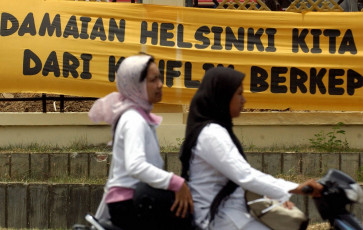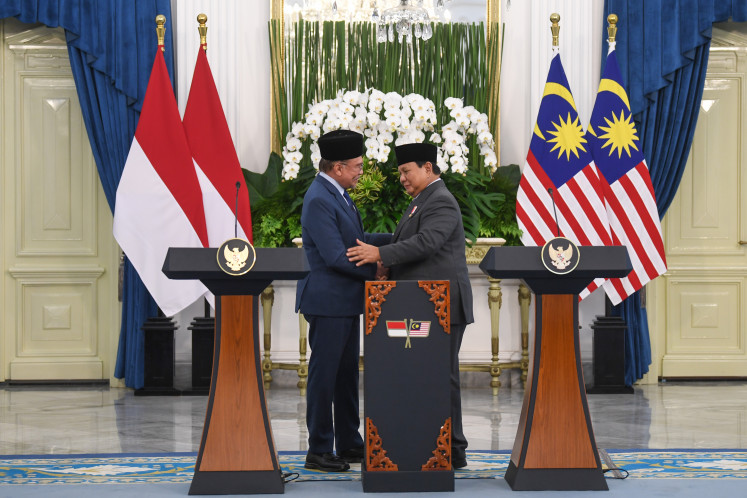Popular Reads
Top Results
Can't find what you're looking for?
View all search resultsPopular Reads
Top Results
Can't find what you're looking for?
View all search resultsPrimary forest is vanishing
A new study has shown that between the years of 2000 and 2012, the country lost 38 percent of its primary forest, with adverse effects on the nationâs biodiversity
Change text size
Gift Premium Articles
to Anyone

A
new study has shown that between the years of 2000 and 2012, the country lost 38 percent of its primary forest, with adverse effects on the nation's biodiversity.
'Indonesia's deforestation rate is increasing, with significant consequences for the country's greenhouse gas emissions and biodiversity,' the World Resources Institute (WRI) said.
WRI researcher Ariana Alisjahbana said that the most notable aspect of deforestation was that it occurred within official areas that are supposed to restrict forest clearing, such as national parks and protected forests.
The new data showed that the problem was worsening, with the country's primary forest loss increasing by an average of 47,600 hectares (ha) each year, with an increasing proportion occurring in wetlands, triggering massive greenhouse gas emissions from peat soils.
President Susilo Bambang Yudhoyono issued a moratorium on deforestation in 2011 with the intention of synchronizing economic, social and cultural development with environmental development.
In 2013, however, with another presidential instruction, Yudhoyono began directing efforts aimed at improving the management of forest and peat soils.
Both presidential instructions were issued with the express purpose of reducing gas emissions from deforestation and forest degradation.
However, a researcher from the Center for International Forestry Research (CIFOR), Daniel Mudiyarso, said the government had never been serious about stopping deforestation.
He said that the first moratorium relating to forestry, which was issued in 2011, was actually intended to set up better forestry management and delay the issuance of new permits.
Daniel said that there was no relation between the moratorium issuance in 2011 and attempts to decrease deforestation.
In the attempt to protect forests and peat soils, the government has established a moratorium map, which would be updated every six months, according to an agency.
Reducing emissions from deforestation and forest degradation plus (REDD+) management agency spokesperson Sari Soegondo said the moratorium map provided a complete picture of forests with licensing to be exploited and areas covered by the moratorium.
Sari said more than 72 million ha ' consisting of 55 million ha of primary forests and 17 million ha of peat soil ' would be covered by the moratorium map, according to the first policy issuance in May 2011.
Sari, however, said that more than 2.8 million ha of forest and peat soil had disappeared between May and December 2011.
Furthermore, within the period between December 2011 and June 2012, the country lost 3.769 million ha of forests and peat soil.
The deforestation occurred in spite of the issuance of a forest moratorium map in December 2011.
Between June 2012 and June 2014, the country lost 1.2 milllion ha of forest and peat soil, with the biggest loss of 575,809 million ha happening between December 2013 and June 2014.
'Currently we have 64.12 million ha of forests recorded in the sixth version of the moratorium map, which shows the distribution of primary forest and peat soil related to ownership and licensing,' Sari said in a written statement made available to The Jakarta Post. (put)









